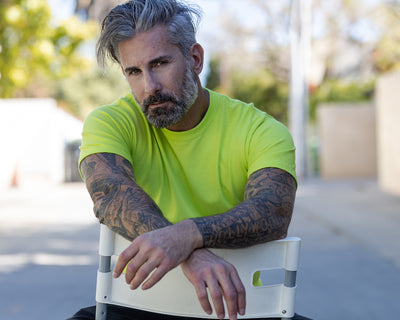Best Info For Deciding On Bamboo Clothing
Wiki Article
What Are The Environmental Advantages Of Low-Impact Hemp Clothing?
The hemp clothing made from low-impact is more environmentally friendly than clothes made of synthetic fibers. Here are a few important environmental benefits of hemp clothing. Sustainable farmingThe hemp crop is sustainable. Hemp is a sustainable crop. It grows rapidly and requires very little irrigation, herbicides or pesticides. Hemp thrives in all climates and is adaptable to different soil types, reducing the requirement for chemical fertilizers.
Lower water usage- Hemp generally requires less water than cotton, which is famous for its water use. Hemp is a water-efficient option for the production of clothing.
Hemp is usually grown without synthetic pesticides. Pesticides are not required. This can help reduce the environmental impacts that come with farming using chemicals.
Hemp is good for the health of soil. The deep roots of the plant stop erosion and compaction. The soil is in a better state for future growth.
Hemp can be biodegraded. It degrades naturally with time and reduces the amount of textile waste. Synthetic fibers like polyurethane can take a lot of time to decompose.
Lower Carbon Footprint. The process of making hemp fibres is usually lower in carbon than the production of synthetic materials. Additionally, during its development, hemp can absorb carbon dioxide from the atmosphere and act as a carbon sink.
Hemp clothes are known for its durability and long-lasting. Good quality hemp clothing lasts for many years, which reduces the necessity to replace them regularly.
Hemp plants show the natural ability to resist many pests. Chemical pest control is not required.
Hemp is a versatile fabric that can be made into bags, clothes or accessories.
Regenerative agriculture- Certain sustainable farming methods integrate hemp into systems of regenerative agriculture which aim at restoring and improving ecosystems while producing plants. It can also have positive impacts on the environment.
While hemp has many advantages for the environment, its sustainability is impacted by other elements, such as the transport, dyeing process and the behavior of consumers. Like any other industry, you can find variations in production methods and guidelines. This is why it's essential to look for certified hemp clothing or organic clothing. This will give you the most environmental benefit. View the top hemp clothes for blog recommendations including patagonia double knee pants, hemp fabric clothing, 100 hemp shirt, hemp sportswear, hoodlamb jacket, hoodlamb jacket, patagonia ranch jacket, patagonia hemp island pants, nomad hemp wear, hemp active wear and more.

How Does Hemp Improve The Carbon Sequestration Process And Sustainably?
Carbon Sequestration:
Hemp matures quickly, between 70 and 120 days, based on its variety and growing conditions. In the process of photosynthesis, hemp plants absorb the CO2 from the atmosphere during their rapid growth. Carbon uptake is a significant contribution to carbon sequestration as well as reduces CO2 levels in the air.
Hemp is well-known for its high production of biomass. The tall stalks and dense leaves of the plant produce an enormous amount of organic matter. The biomass, when mixed into the soil or utilized to create various products can help to build up of carbon.
Sustainability:
Low Chemical Use- Hemp cultivation typically requires less herbicides and pesticides made of synthetics when compared to some other crops such as cotton. Hemp's natural resistance against many insects and diseases is reduced by chemical interventions. Organic hemp farming is a sustainable method of cultivating hemp since it doesn't rely on synthetic chemicals.
Hemp is a water-efficient crop and grows without much irrigation. This makes it a sustainable crop in areas in which water resources are scarce. This makes it a viable option in areas where water is scarce.
Hemp roots are long and aid in improving soil quality. The roots of Hemp can prevent erosion by stabilizing soil structure, and also reducing runoff. Hemp cultivation also improves soil fertility by encouraging soil microbial activity.
Hemp can be integrated into systems for crop rotation. Crop rotation refers to the practice of alternating between different crops in a single field. This practice can help break the pest and disease cycle, reduce soil erosion, and improve soil structure. The role of hemp in crop rotation is a key factor in the sustainability of farming practices.
Crop Rotation-
Hemp can be a great addition to crop rotations alongside other crops, like grains, legumes, or vegetables. Diversification can help farmers maintain soil health and decrease pests and disease. It also helps to maintain balanced cycle of nutrient production.
Soil Improvement- The hemp's deep roots can penetrate the soil and aerate it, reducing compaction and enhancing the water's infiltration. The improved soil structure after hemp cultivation benefits subsequent crop.
In summary hemp fibers can improve carbon sequestration practices sustainable, crop rotation, and water efficiency through their rapid growth biomass production and low chemical needs. These characteristics make hemp production an environmentally sustainable and regenerative agricultural practice. The resulting fibers are suitable for use in textiles, as well as other applications that are eco-friendly. Have a look at the top hemp clothing blog for blog info including hemp active wear, hemp shorts patagonia, women's all seasons hemp canvas bomber hoody jacket, patagonia hemp overalls, hemp cotton fabric, hemp apparel fabric, hemp boxer shorts, jeans hemp, hemp sportswear, hemp fleece fabric and more.

What are the main differences between hemp and bamboo fibers
There are a variety of differentiators between bamboo and hemp, including their unique characteristics. Below are the key differences between hemp and bamboo fibers. Plant Source-
Hemp- Hemp is derived from hemp stalks. Particularly the outer basts. Hemp has been used for many purposes over through the ages. Hemp is a rapidly growing multi-purpose plant.
Bamboo fibers can be produced from the pulp that is produced by the bamboo plant. Bamboo is known as a species of grass with rapid growth, as well as its capacity to regenerate rapidly.
2. Fiber Characteristics
Hemp- Hemp fibers are recognized for their durability and strength. They are natural fibers with a lot of strength that become softer and softer after washing, making them suitable to make durable textiles.
Bamboo fibers can be smooth and soft. They can be more delicate and less resilient than hemp fibers, however they are still valued for their softness against skin.
3. Texture and Feel-
Hemp- Hemp has a slightly coarse texture, especially when it is in its natural state. It's comfortable, but the texture is different than bamboo.
Bamboo is soft and silky smooth. It is often described by its wearers as a mixture of silk and cotton.
4. Breathability and Moisture-Wicking-
Hemp- Hemp fabrics are naturally moisture-wicking. This allows for better air circulation, and also absorbs moisture. They keep you cool and dry during hot weather.
Bamboo Fibers- Bamboo fibres have a high amount of breathability as well as moisture wicking. The micro-gaps enhance the ability of bamboo fibers to regulate moisture and temperatures, keeping you at ease no matter the weather.
5. Environmental Impact-
Hemp Hemp can be considered an environmentally friendly fiber due to of its fast growth rate, low need for water and resistance against insects. These attributes reduce the use of herbicides or pesticides. Hemp can also sequester carbon during its growing process.
Bamboo is a well-known choice for environmentally friendly building materials. It is fast growing, requires minimal water, and is able to be grown without synthetic pesticides or herbicides. Some bamboo varieties are considered extremely sustainable, like Moso bamboo.
6. Processing-
Hemp- Hemp fibers must be processed extensively to separate the bast fibers from their inner core. The process may involve retting or decortication.
Bamboo The bamboo fibers are obtained using a chemical called the viscose process. It involves using chemicals to break the bamboo into a pulp. While this process raises environmental concerns if it is not managed in a responsible manner, certain bamboo textiles utilize closed loop systems to minimize chemical waste.
7. Versatility-
Hemp- Hemp fibers are multi-functional and are utilized in a variety of uses, such as clothes, textiles, paper, building materials, and more.
Bamboo- Bamboo fibers are mostly used in textiles and clothing but they are also used in other items such as towels and bedding.
Both hemp, and bamboo are distinct and offer sustainable advantages. The choice between them depends on the specific characteristics and features you are looking for in a product made of textiles and your environmental preferences. Follow the best bamboo clothes for blog examples including bamboo cay shirts christmas, bamboo fabric clothing, angel dear bamboo pajamas, onno bamboo shirts, bamboo shorts womens, bamboo trousers mens, bamboo brand jeans, bamboo pants, freefly summer hoodies, dixxon bamboo shirt and more.
